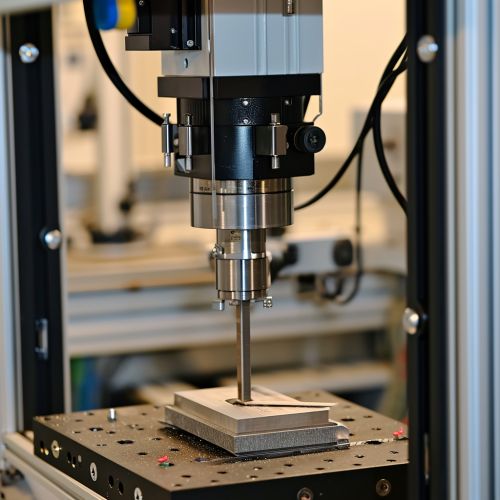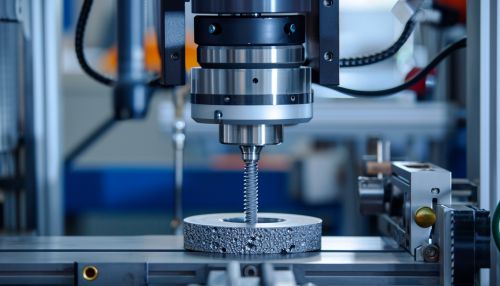Material Testing
Introduction
Material testing, also known as materials science, is a specialized field of study that focuses on the analysis and testing of various materials to determine their properties, performance, and suitability for specific applications. It is a critical aspect of engineering and manufacturing, ensuring that materials used in products and structures meet the necessary standards and specifications.
Types of Material Testing
There are several types of material testing, each designed to evaluate a specific property of a material. These include:
- Tensile testing: This test measures the strength of a material when subjected to a pulling force. It determines the material's tensile strength, yield strength, and elongation.


- Compression testing: This test measures the ability of a material to withstand compressive loads. It is commonly used in the testing of concrete and other construction materials.
- Hardness testing: This test measures the resistance of a material to indentation or scratching. It is often used in the testing of metals and polymers.
- Impact testing: This test measures the energy absorbed by a material during fracture. It is used to determine a material's toughness and ductility.
- Fatigue testing: This test measures a material's ability to withstand repeated loading and unloading. It is used to predict the material's lifespan under cyclic stress conditions.
Material Testing Techniques
Material testing can be conducted using a variety of techniques, depending on the type of material and the property being tested. Some of the most common techniques include:
- Destructive testing: This involves testing a material to the point of failure to understand its performance under extreme conditions. It provides valuable information about a material's maximum load capacity and failure mechanisms.
- Non-destructive testing: This involves testing a material without causing damage or altering its properties. Techniques include ultrasonic testing, radiographic testing, and magnetic particle testing.
- Chemical analysis: This involves determining the chemical composition of a material. Techniques include spectroscopy, chromatography, and elemental analysis.
- Microscopy: This involves examining the microstructure of a material. Techniques include optical microscopy, scanning electron microscopy (SEM), and transmission electron microscopy (TEM).
Applications of Material Testing
Material testing plays a crucial role in a wide range of industries and applications, including:
- Aerospace: Material testing ensures that materials used in aircraft and spacecraft can withstand the extreme conditions of flight and space travel.
- Automotive: Material testing is used to evaluate the performance and safety of materials used in vehicles, including metals, plastics, and composites.
- Construction: Material testing ensures that building materials, such as concrete, steel, and timber, meet the necessary standards for strength, durability, and safety.
- Electronics: Material testing is used to evaluate the properties of materials used in electronic devices, including semiconductors, insulators, and conductors.
- Biomedical: Material testing is used to evaluate the properties of materials used in medical devices and implants, ensuring their safety and effectiveness.
Conclusion
Material testing is a vital aspect of materials science, providing critical information about the properties and performance of various materials. By understanding these properties, engineers and manufacturers can select the most suitable materials for specific applications, ensuring the safety, reliability, and longevity of their products and structures.
